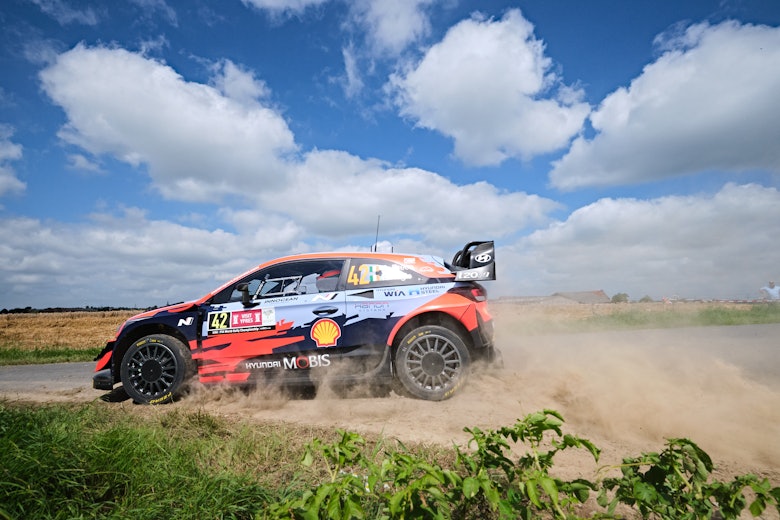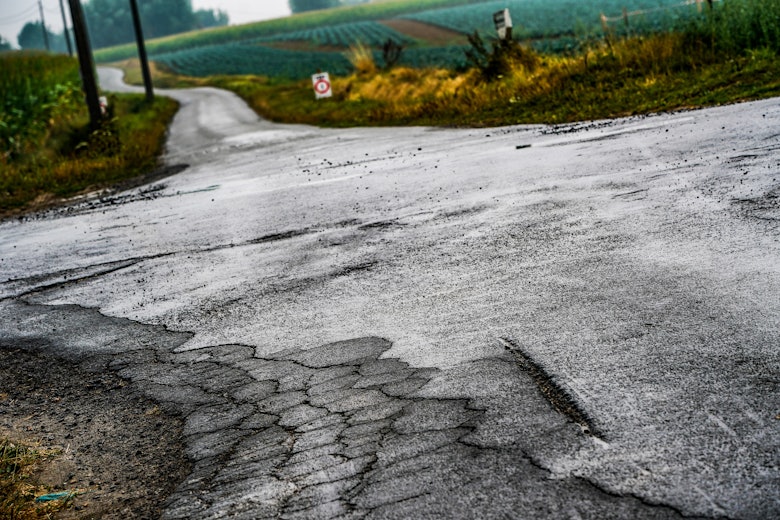Pacenotes. Get them wrong and they have devastating consequences. Just as M-Sport’s Adrien Fourmaux found out to his cost on Ypres Rally Belgium last year, when he wrecked his Ford Fiesta WRC in an almighty shunt.
“It was just a mistake on my pacenotes,” Fourmaux explained to DirtFish. “I just need to be careful with my pacenotes on this rally but the confidence is there.”
On Safari Rally Kenya earlier this season, drivers were having to improvise new language for their pacenotes, such was the impact of the deep, sandy fesh-fesh patches.
This time it’s all about the cuts. Cut and don’t (cut) simply won’t do this weekend. With so many junctions there’s lots of time to be gained if they’re taken right. But get the cuts wrong and it can be a rally-ending risk gone wrong.
Hit the edge of a road at the wrong angle and it can damage a wheel. Or take too much speed through a particularly muddy cut and you can slide off into a fence.
How does writing Ypres-specific notes work in practice, though? We asked Elfyn Evans.
“We have our system, trying to judge exactly how much you can or can’t go in, trying to describe the lips or the steps coming back onto the Tarmac, which can be difficult,” explained the Toyota driver.
“The issue that always puts a spanner in the works is if you have a road that’s very dirty as everyone’s been in. Your hand is forced to go in anyway. To describe that you can go in if you absolutely have to, it’s quite a mouthful. It’s difficult to describe sometimes.
“You’d have a ‘cut maybe’ sometimes, where you can cut if you have to. Maybe if the road is clean you choose not to go.”
Ypres’ many cuts are where drivers are best placed to gain time. But where time can be lost hand over fist is the braking zones. Being too early on the middle pedal or getting the turn-in point wrong is an easy trap to fall into.

Craig Breen knows a thing or two about Ypres – he’s won here before. But as he points out, one of the most difficult elements of the rally is “knowing which roads you’re taking”.
“That sounds so stupid; it’s not like you’re on the motorway looking for the exit,” he clarifies. “Sometimes these big long straights, the road’s completely flat, you’ve got no features and you’re searching for that strip of Tarmac where you’re turning in.
“Ypres, you’ve got no arrows. Normally on rallies we’ve got arrows telling us each junction. There’s nothing here. Trying to get those braking points 100% right at 200kph [124mph] to basically stopped at 10-15kph to make a junction is really difficult and crucial. It’s always a tricky point.”

An arrow at the side of the road might not sound hugely important. After all, that’s why the co-drivers are in the passenger seat, to tell the drivers where and when to turn. But Breen’s M-Sport team-mate Gus Greensmith was already struggling at times on the recce without any stage-side arrows – a unique quirk of Ypres.
“I wish they put arrows on junctions, seeing as there’s about 2000 of them,” he quipped.
“I’m good at remembering stages but I’m not that good. There’s a few times where I’m pretty sure it’s this way, went that way, and Jonas went ‘nah, it’s not this way’. It’s a bit frustrating.”
Getting junctions wrong is unlikely to be Greensmith’s biggest challenge this week, though. Rain has been forecasted for Friday, which will make those tricky cuts even more of a handful for the drivers further down the road order.
“I wish it [the rain] would eff off because it’s making my job a lot harder! The pollution on the road with the amount of cutting here will be crazy.”
Preparation here is key, but adaptation is perhaps even more vital.





